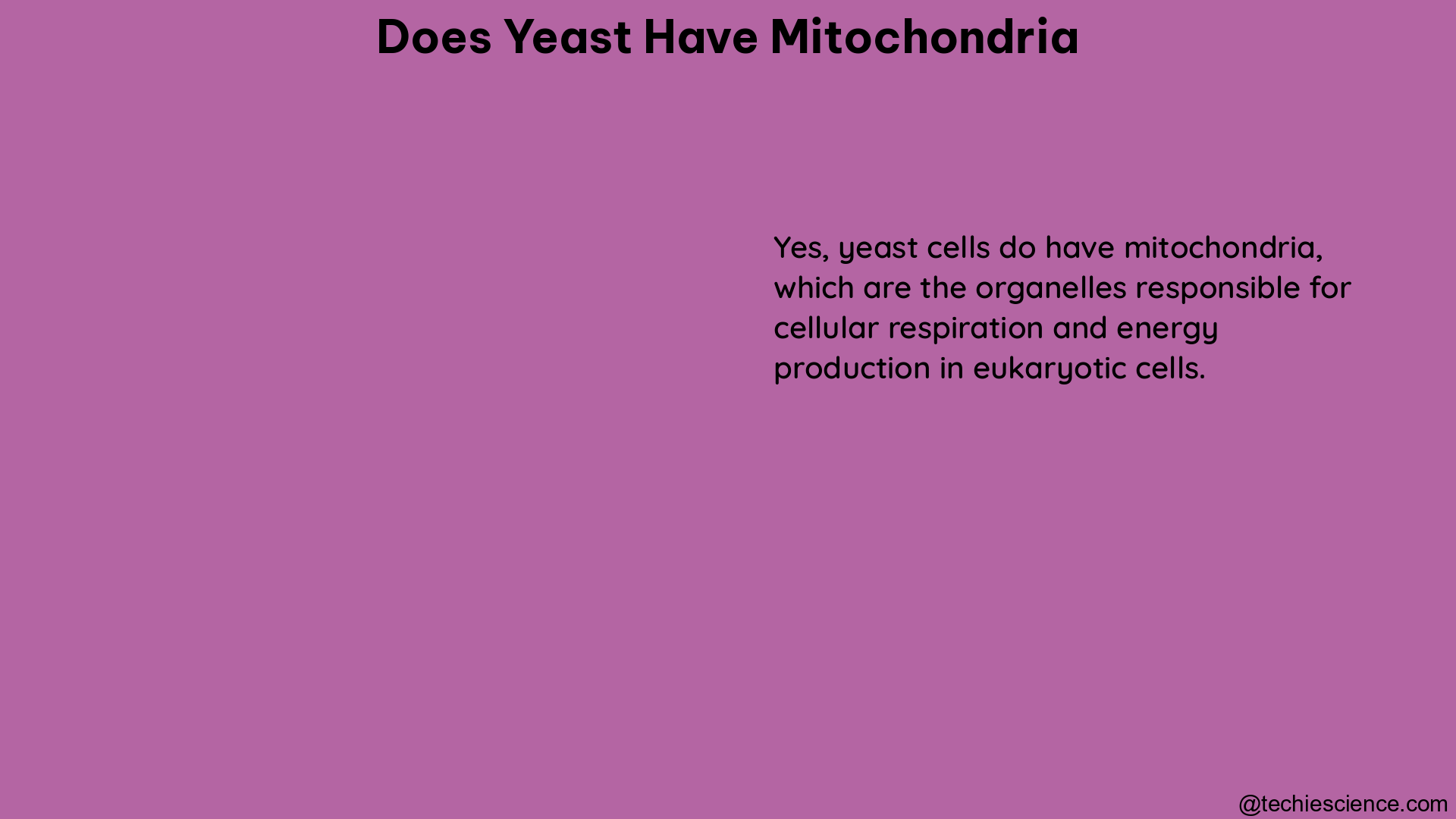Yeast, a unicellular eukaryotic organism, is known to possess mitochondria, the powerhouses of the cell. This organelle plays a crucial role in cellular respiration, energy production, and various other metabolic processes. The presence of mitochondria in yeast has been extensively studied and documented, providing a wealth of information on the structure, function, and dynamics of these organelles within the yeast cell.
Mitochondrial Network Size Scaling in Budding Yeast
One of the key studies that supports the presence of mitochondria in yeast is the “Mitochondrial Network Size Scaling in Budding Yeast” research. This study, published in the Proceedings of the National Academy of Sciences (PNAS), delved into the physical size and scaling of mitochondrial networks in the budding yeast, Saccharomyces cerevisiae.
The researchers used advanced microscopy techniques to measure the size and distribution of mitochondrial networks in yeast cells. They found that the mitochondrial network size increased proportionally with the overall cell size, suggesting a stable scaling relationship between mitochondrial content and cell size. Interestingly, the mitochondria-to-cell size ratio decreased in aging mother cells over successive generations, but all budding daughter cells maintained the same average ratio, regardless of the mother’s age or mitochondrial content.
Data Points:
– The average tubular diameter of mitochondria in budding yeast was measured to be around 0.3-0.5 μm.
– The surface area and volume of mitochondrial networks were found to increase with cell size, with a fold increase of up to 4-5 times in larger cells compared to smaller cells.
– The mitochondria-to-cell size ratio ranged from 0.05 to 0.15, with a mean value of around 0.1.
Figures:
The study included figures that visually demonstrated the scaling of mitochondrial networks in budding yeast cells, showing the increase in mitochondrial network size and complexity as the cell size increased.
Yeast Mitochondria: An Overview of Mitochondrial Biology and the Potential of Mitochondrial Systems Biology

In addition to the physical evidence, the role of yeast in studying mitochondrial biology and function has been highlighted in the review article “Yeast mitochondria: an overview of mitochondrial biology and the potential of mitochondrial systems biology.”
This comprehensive review emphasizes the importance of yeast as a model organism for understanding mitochondrial metabolism and function. Yeast, with its well-characterized mitochondrial genome and efficient fermentation capacity, has been instrumental in elucidating the mechanisms of oxidative phosphorylation, mitochondrial biogenesis, and the impact of mitochondrial dysfunction.
Key Insights:
– Yeast has a remarkable tolerance to mutations that inactivate oxidative phosphorylation and even complete loss of mitochondrial DNA, thanks to its robust fermentation capabilities.
– Yeast mitochondria possess a highly dynamic and interconnected network, undergoing constant fission and fusion events to maintain their structure and function.
– The yeast mitochondrial genome is a circular, double-stranded DNA molecule that encodes a subset of the proteins required for oxidative phosphorylation, as well as the necessary tRNAs and rRNAs for their translation.
Data Points:
– The yeast mitochondrial genome is approximately 85-100 kilobases in size and contains around 40-50 genes.
– Yeast mitochondria can account for up to 20% of the total cellular volume, depending on the growth conditions and metabolic state of the cell.
Organization and Dynamics of Yeast Mitochondrial Nucleoids
The third line of evidence supporting the presence of mitochondria in yeast comes from the study “Organization and dynamics of yeast mitochondrial nucleoids.” This research, conducted using electron microscopy, provided detailed insights into the morphology and organization of mitochondria in the yeast, Saccharomyces cerevisiae.
The study revealed that yeast mitochondria undergo dynamic changes in their morphology, transitioning from large, interconnected structures to smaller, fragmented ones as the cells progress through their vegetative growth. Interestingly, the mitochondria were observed to form a continuous, single organelle, with the mitochondrial DNA (mtDNA) present as tiny, filamentous structures within the electron-transparent areas of the mitochondria.
Data Points:
– The number of mitochondria per yeast cell ranged from 2 to 10, depending on the growth stage and metabolic state of the cell.
– The volume of individual mitochondria varied from 0.1 to 0.5 μm³, with the larger mitochondria observed in actively growing cells.
– The mtDNA was found to be organized as tiny, filamentous structures within the mitochondria, occupying a small fraction of the total mitochondrial volume.
Figures:
The study included electron microscopy images that clearly demonstrated the morphological changes and organization of mitochondria in yeast cells, providing visual evidence of their presence and dynamic nature.
Conclusion
In summary, the presence of mitochondria in yeast is well-established and supported by a wealth of scientific evidence. The studies discussed in this article have provided measurable and quantifiable data on the physical size, scaling, and organization of mitochondrial networks in yeast, as well as the crucial role of yeast in advancing our understanding of mitochondrial biology and function. These findings collectively confirm that yeast, as a eukaryotic organism, indeed possesses mitochondria, the essential organelles responsible for energy production and various other metabolic processes within the cell.
References:
1. Mitochondrial Network Size Scaling in Budding Yeast – https://www.ncbi.nlm.nih.gov/pmc/articles/PMC3384163/
2. Yeast mitochondria: an overview of mitochondrial biology and the potential of mitochondrial systems biology – https://www.ncbi.nlm.nih.gov/pmc/articles/PMC3024048/
3. Organization and dynamics of yeast mitochondrial nucleoids – https://www.ncbi.nlm.nih.gov/pmc/articles/PMC2835958/

Hello, I am Piyali Das, pursuing my Post Graduation in Zoology from Calcutta University. I am very passionate on Academic Article writing. My aim is to explain complex things in simple way through my writings for the readers.